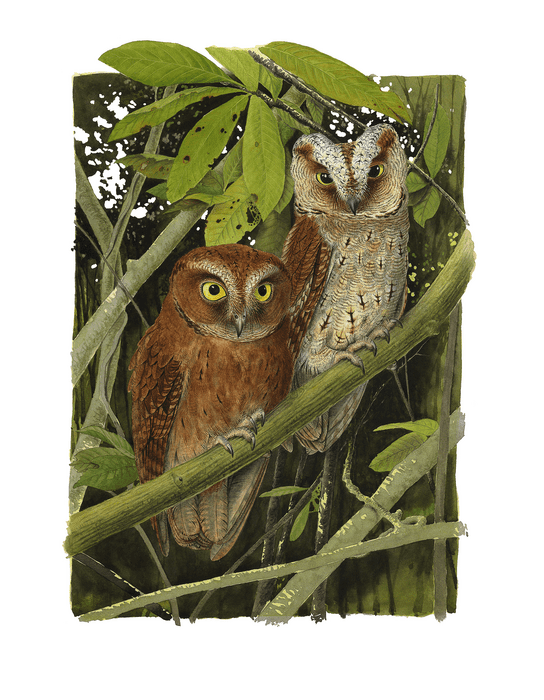If you go down to the forests of the Democratic Republic of São Tomé and Príncipe, you might just be lucky enough to hear the distinct short “tuu” note of the islands’ newest species. The Principe Scops-Owl, or Otus bikegila, has just been formally described, though local people have suggested its presence since as far back as 1928.
The genus Otus comprises around 50 other species of small owls, commonly known as the scops-owls, that share a common history and are found across Europe, Asia, and Africa. The species name “bikegila” is in honor of Ceciliano do Bom Jesus, nicknamed Bikegila, ranger of the natural park.
“The discovery of the Principe Scops-Owl was only possible thanks to the local knowledge shared by Bikegila and by his unflinching efforts to solve this long-time mystery,” the researchers say in a statement. “As such, the name is also meant as an acknowledgment to all locally-based field assistants who are crucial in advancing the knowledge on the biodiversity of the world.”
Four scops-owl individuals from the island were used to assess the morphology, plumage color, and provide molecular evidence that have all been used to back up the species status of this new owl. The most used diagnostic trait in the field, which led to its discovery, was its voice of the owl itself. The primary call is a short note, produced at a fast repetition rate. A unique sound that is similar to insect noises, it is often sung as a duet as the night falls.

An illustration of Otus bikegila. Image credit: Marco Correia
Extensive surveying led the team to find out that the Principe scops-owl lives only in an uninhabited part of the native forest of Príncipe in an area of 15 kilometers square. Fortunately this area is fully included within the Príncipe Obô Natural Park. However the densities of owls in this habitat are high with around 1000-1500 individuals in the expected population. Because of their incredibly small species range the researchers have suggested that the population be listed as critically endangered by the IUCN.
The addition of Otus bikegila takes the total number of single-island endemic bird species of Príncipe to eight, which is highly unusual for an island of just 139 square kilometers (54 square miles). The two islands that make up the Democratic Republic of São Tomé and Príncipe have the highest number of endemic bird species in the world, at 28 species. Other new owl species have also been recently discovered in the Amazon.
The team suggest that now the only island in the Gulf of Guinea without records of a scops-owl is Bioko Island, and perhaps another new species lives in the forest waiting to be discovered. Maybe it’s even got a stick horse for company.
The study is published in ZooKeys.
Source Link: New Species of Scops-Owl Discovered On Príncipe Island